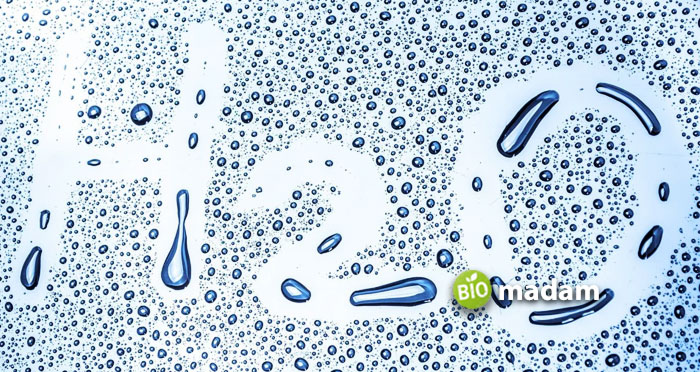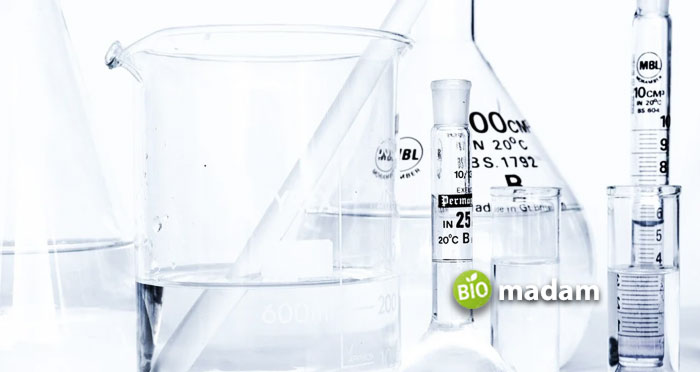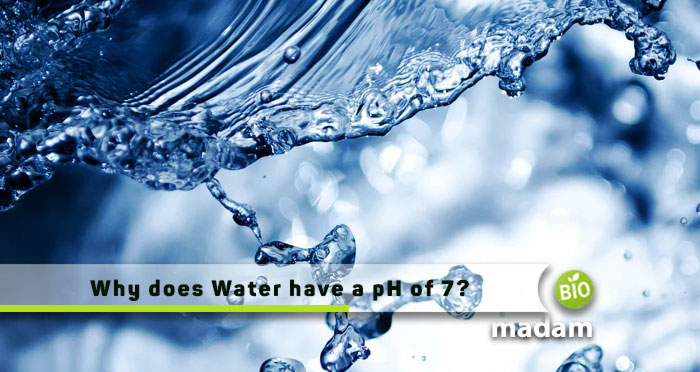Water is essential for life. Its pH is important because it affects the way water molecules interact with each other and with other substances. This, in turn, affects how water can dissolve and transport minerals and nutrients.
In this article, we’ll explore why pure water has a pH of 7, what the pH scale is, and how different factors can influence water quality and the pH of your drinking water.
We’ll also look at the benefits and consequences of having unusual pH levels in your water and how you can test and fix it at home.
Why does Pure Water have a pH of 7?
Pure water has a pH of 7 because that is the most stable state for water. In its neutral form, water molecules are equally attracted to each other and other substances. Water with a pH of 7 can dissolve and transport minerals and nutrients effectively.
A Balance Between Hydroxide Ion and Hydrogen Ion
For water to have a pH of 7 (i.e., neutral pH), there must be an equal number of hydrogen ions and hydroxide ions. When these cations and anions are combined, they cancel each other out and create a neutral solution.
The reason why pure water can maintain this balance is that it is constantly interacting with minerals and other substances. These interactions help to replenish the supply of ions in the water, keeping the pH at 7.
Calculating the pH of Pure Water
pH is defined as:
pH = -log10[H+]
In the above equation [H+] is the concentration of hydrogen ions (H+), measured in moles/liter.

For pure water measured at room temperature, the hydrogen ion concentration is roughly 10-7 moles/liter, which gives a pH of 7.
What is the pH Scale?
The pH scale is a way of measuring how acidic or basic a substance is. The pH scale ranges from 0 to 14, with 0 being the most acidic and 14 being the most basic (or alkaline).
A substance with a pH of 7 is considered neutral. This means that it is neither acidic nor basic. Acidic substances have a pH below 7, while basic (or alkaline) substances have a pH above 7.
Danish chemist Sørensen first introduced the pH scale in 1909. He chose the pH scale because it was more convenient than the older scale, which measured acidity in terms of the percentage of acid present.
The pH range is now used worldwide to measure a substance’s acidity or basicity.
Typical pH Levels of Water
Most water sources have a pH value of 6.5 to 8.5. This is because water constantly interacts with minerals and other substances, affecting its pH.
Here is a list of different types of water and their typical pH levels.
- Groundwater: 6.5 to 8.5 (neutral water)
- Rainwater: 5.0 to 6.0
- Surface water (lakes and rivers): 6.5 to 8.5
- Drinking water: 6.5 to 8.5
Factors that can Influence the pH of your Drinking Water
Many factors can affect the pH of your drinking water. These include:
- the type of water source (groundwater, surface water, etc.)
- the presence of minerals in the water
- the presence of pollutants or other substances
- the temperature of the water
Below, we’ll explore each of these factors in more detail.
Type of Water Source
The type of water source can significantly impact the pH of your drinking water. Groundwater is typically more alkaline than surface water, while rainwater is generally more acidic.
Minerals in Water
The presence of minerals such as calcium and magnesium can influence the pH of your drinking water. These minerals tend to make water more alkaline.
Pollutants and Other Substances
Pollutants or other substances in your drinking water can also affect its pH. For example, industrial waste products make water more acidic (low PH).
Temperature
The temperature of your drinking water can also influence its pH. Warmer water is typically more alkaline (high pH) than cold water.
Benefits & Consequences of Unusual pH Levels
Normal pH levels are generally considered between 6.5 to 8.5, as this is the range in which water is typically found. Outside of this range, there are some benefits and consequences to be aware of.
Low pH levels (less than 6.5)
Water with a pH level of less than 6.5 is known as acid water. It doesn’t sound too healthy, does it? Overall, it’s not recommended to drink it, but there may be some benefits to washing or cleaning with slightly acidic water.
Some of the possible benefits of lower pH levels include:
- may help to treat inflamed skin conditions and diseases
- maybe good for hair and skin
- the possible antimicrobial effect, for better cleansing of fruit & vegetables before eating
Some of the downsides and side effects of lower pH levels include:
- corrosion and damage to pipes
- acid water is often found to contain high levels of heavy metal, which may have leached into water from metal pipes
- may damage the enamel of your teeth
- may be bad for bone health
High pH levels (greater than 8.5)
Alkaline water, which is pH water over 8.5, has become a bit of a trend of late. While drinking is safe, there’s just no evidence to back up the health claims some companies are making.
Some of the unproven benefits that manufacturers of expensive alkaline drinking water machines use in their marketing material include:
- better energy levels
- improved digestion and metabolism
- improved weight loss
- slows aging
To reiterate, none of these claims appear to have any proven benefits but buying it bottled or purchasing a machine will put a dent in your wallet.
How to Measure the pH of Water

Testing water quality in relation to pH is relatively simple, and you can do it at home in several ways.
One popular (and cheap) method is to use litmus paper. Litmus paper is treated with a special dye that changes color when it comes into contact with an acidic or basic solution. Simply dip a piece of the litmus paper into the water and compare the color of the paper to the provided color chart.
Another popular method for testing water pH is using an electronic pH meter. These meters are more accurate than litmus paper and can be reused multiple times. Turn on the device and place it in the water for a few seconds. Usually, the meter will beep when it’s finished and display a reading of the water’s pH level.
How to Neutralize Water at Home
If the pH of your drinking water is outside the usual range, you can do a few things to neutralize it.
Installing an Acid-Neutralizing Water Filter
These special water treatment systems are designed to remove minerals and other pollutants from water, which can help neutralize acid water. Some use soda ash which is effective in raising the pH of water.
pH neutralizers are most commonly used by homes supplied with well water.
Boiling your Water to Increase Acidity
If your water has a high pH, then boiling it can help to neutralize it. This is because the boiling process removes dissolved minerals from the water, making it more acidic.
To Alkalinity and Beyond
Now you know the ins and outs of water pH levels and why pure water has a pH of 7, you can make an informed decision on whether or not you want to purchase a machine that claims to raise your energy levels and slow down the aging process.
SPOILER ALERT: They don’t work, so don’t waste your money.
Alternatively, if you’re suffering from highly acidic water corroding your pipes and fixtures, consider an acid neutralizer, especially if you’re using well water at home.
In the meantime, drink up and prosper!

Hi, they call me Jenna, and I am also known for achieving a gold medal during my Ph.D. in science life. I always had a dream to educate people through my utmost writing hobby. So, I chose this blogging path, and Biomadam gave me this opportunity to present for them. I now stand to entertain you. Continue reading my articles & discuss if you’ve any confusion through the comment section below.

